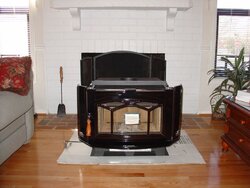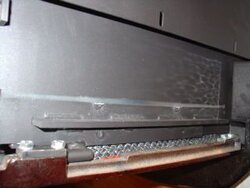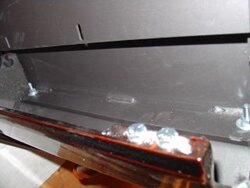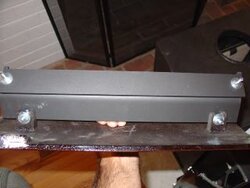Hello All... My other post on the Hampton wood insert raised a question for me that I'm not smart enough to answer. Since I know that there are some really smart guys in this forum I'm hoping that someone will be able to answer this question.
Question - How do you know where the air is coming from to fire the combustion in your insert?
I've looked at some inserts (Vermont Castings I think) and I remember seeing a port that an outside air kit would hook directly to and I'm assuming that that is an extremely efficient way to get your fireplace to use outside air since you can essentially make your firebox airtight on the home side. But, I don't see that same type of port on the Hampton drawings or even on the Pacific Energy Summit. I can see on the Summit manual that in order to draw combustion air from the outside you need to seal the front surround and allow it to only draw air from the space around it in the hearth... but is that efficient?
Since a direct connection to the flue liner is a commonly accepted standard, how come it's not commonly accepted to directly connect the outside air kit to the air intake on the appliance?
Last Question - Would you let the lack of an outside air option stop you from buying an insert? Page 14 (First Fire) item 13 of the HI300 manual states that you need to supply enough fresh air to the fire, by possibly opening a window (and cooling your $4500 worth of heat that you just had installed), is there no other way???
Thanks all!
Question - How do you know where the air is coming from to fire the combustion in your insert?
I've looked at some inserts (Vermont Castings I think) and I remember seeing a port that an outside air kit would hook directly to and I'm assuming that that is an extremely efficient way to get your fireplace to use outside air since you can essentially make your firebox airtight on the home side. But, I don't see that same type of port on the Hampton drawings or even on the Pacific Energy Summit. I can see on the Summit manual that in order to draw combustion air from the outside you need to seal the front surround and allow it to only draw air from the space around it in the hearth... but is that efficient?
Since a direct connection to the flue liner is a commonly accepted standard, how come it's not commonly accepted to directly connect the outside air kit to the air intake on the appliance?
Last Question - Would you let the lack of an outside air option stop you from buying an insert? Page 14 (First Fire) item 13 of the HI300 manual states that you need to supply enough fresh air to the fire, by possibly opening a window (and cooling your $4500 worth of heat that you just had installed), is there no other way???
Thanks all!


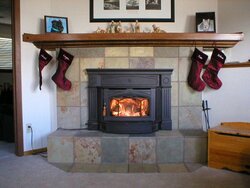
 That's a great way to look at it though Frank. I hadn't considered that the house was going to draw it what it needed whether or not I had a window cracked. Thanks for the comments.
That's a great way to look at it though Frank. I hadn't considered that the house was going to draw it what it needed whether or not I had a window cracked. Thanks for the comments. I just found out that I can go buy one down the street and get it installed on Tuesday. I'm going to run down there and buy it before they go away...
I just found out that I can go buy one down the street and get it installed on Tuesday. I'm going to run down there and buy it before they go away...